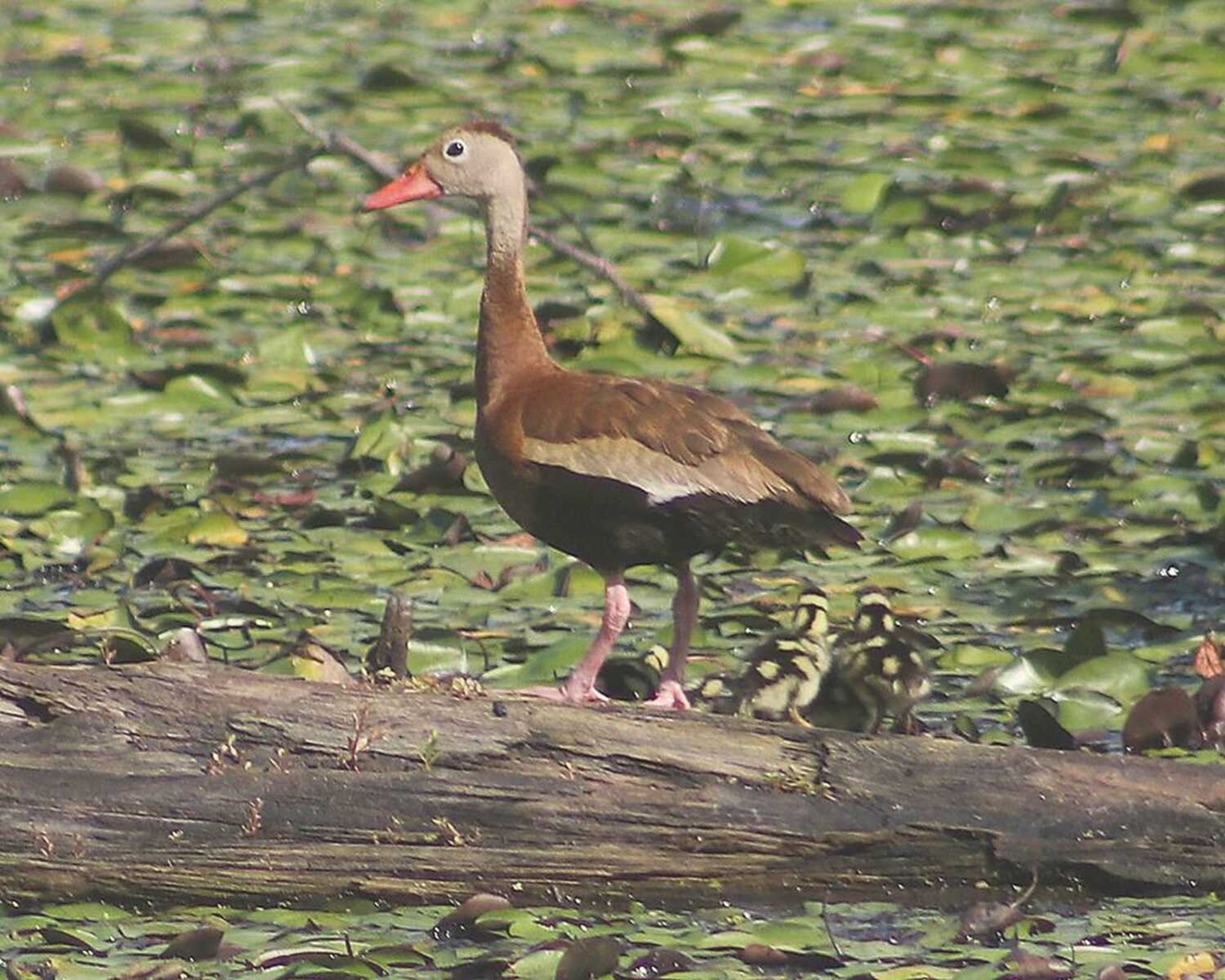Mingo records first brood of rare duck species
PUXICO, Mo. -- If you have plans to visit the Mingo National Wildlife Refuge soon and luck is on your side, you may catch a glimpse of a rare duck species in Missouri. "We've been seeing black-bellied whistling ducks off and on for about 10 years, but sightings have become more and more common," Mingo National Wildlife Refuge biologist Brad Pendley said earlier this week. "We've been consistently seeing them in the summer months for the last five years."...
PUXICO, Mo. -- If you have plans to visit the Mingo National Wildlife Refuge soon and luck is on your side, you may catch a glimpse of a rare duck species in Missouri.
"We've been seeing black-bellied whistling ducks off and on for about 10 years, but sightings have become more and more common," Mingo National Wildlife Refuge biologist Brad Pendley said earlier this week. "We've been consistently seeing them in the summer months for the last five years."
This summer, however, is different because there is a breeding pair of whistling ducks raising seven young ducklings on the refuge, a first as far as Pendley knows.
"We don't know how long this pair has been here, but we've seen them all summer, and both adults have been seen with the brood of seven," he said.
Whistling ducks are a southern species, living primarily in Mexico, Central and South America, and along the coasts of Florida and Texas, though they do occasionally expand northward during their breeding period.
"They're following the Mississippi River up and then expanding their range," Pendley said.
It's very rare, however, to see breeding pairs this far north.
"We think this is only the fourth or fifth recorded breeding in Missouri," he said.
Ironically, three of those broods have been reported in the last week, and two of them are in Stoddard County.
"Having them breed here is what is significant, and it's fascinating," Pendley said. "The fact they're breeding this far north is pretty interesting."
Black-bellied whistling ducks, Pendley said, are considered "tree ducks," much like locally common wood ducks, and they prefer to nest and perch in tree cavities or nesting boxes.
The ducks are rather large, about the size of a mallard, Pendley noted, and have long, pink legs and a pink bill, making them very distinctive looking compared to other local species.
"It's really interesting to watch them," Pendley said, noting the birds aren't as spooky as wood ducks, and if they get alarmed, they typically just swim away slowly.
"They're loud and make a lot of noise, so they're a fascinating bird," he said.
Officials will continue to monitor the refuge in the future for more evidence of breeding pairs and an expansion of the population, something Pendley said would be exciting to see.
"We'll keep our eyes open and see if this becomes a pattern or if it's just a fluke," he said.
Currently, wood ducks and hooded mergansers are the only waterfowl species which consistently breed on the refuge, and they are "one of the reasons Mingo was established," Pendley said.
If you want to visit Mingo to look for the whistling ducks, they've been hanging out on Red Mill Pond, off Highway 51. And as with all wildlife, early mornings or late evenings would be the best times for sighting potential.
Binoculars, a spotting scope or a telephoto lens are recommended for the best viewing.
Visitors should take note the refuge is open from one-half hour before sunrise until one-half hour after sunset, and there is a $3 daily entry fee per vehicle, unless you have the $12 annual pass. Even better, a $25 federal duck stamp covers entry to the entire nationwide refuge system throughout the year and also helps fund their operations.
Don't wait too long to go, however. Pendley expects the whistling ducks to "stick around for another six or seven weeks," only because the young ducklings are so small and cannot yet fly, but "by October, they're going to be looking south."
Connect with the Southeast Missourian Newsroom:
For corrections to this story or other insights for the editor, click here. To submit a letter to the editor, click here. To learn about the Southeast Missourian’s AI Policy, click here.









